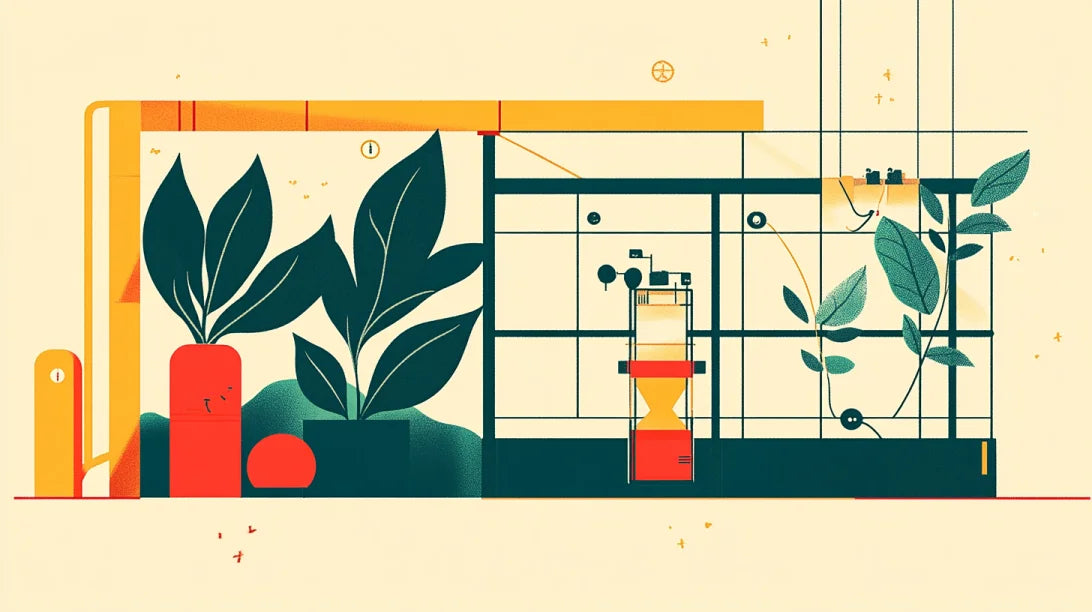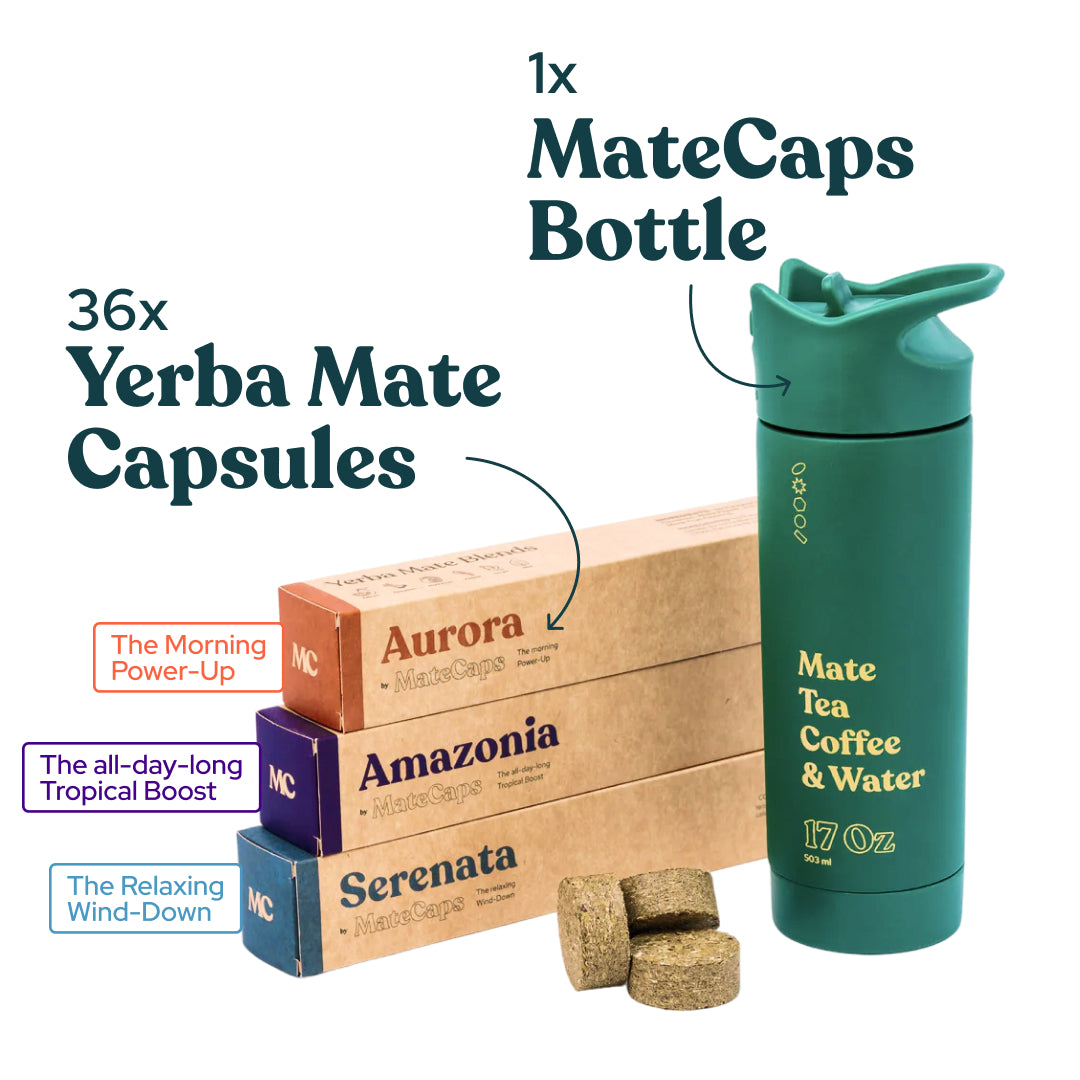
Green Tea vs Yerba Mate: Clean Energy Guide
Green Tea vs Yerba Mate: Which One Gives Better Clean Energy?
Green tea vs yerba mate is a popular question for people who want a natural energy boost without the jitters. ☕️➡️🍵
If you’re switching from coffee or sugary drinks, this guide helps you pick the winner. Short, simple, and science-backed. Read on to learn caffeine facts, health benefits, taste tips, and how to brew both like a pro. 🌿✨
Quick snapshot: green tea vs yerba mate
Green tea: Smooth, calming energy. Rich in L-theanine and antioxidants. Great for focus and relaxation. ✅
Yerba mate: Brighter, stronger buzz. Packed with caffeine, vitamins, and minerals. Social, bold, and sustaining. ⚡️
Both are natural, low-calorie, and better than sugary energy drinks. But which fits your day? Let’s compare.
What are they? (Short and simple)
Green tea
Green tea comes from Camellia sinensis. Leaves are steamed or pan-fired to stop oxidation. This keeps a lot of beneficial compounds intact. Think Japan and China. 🍵
Yerba mate
Yerba mate comes from Ilex paraguariensis. People in South America steep the leaves and sip from a gourd (mate). It’s social and earthy. Mate has a unique mix of caffeine, theobromine, and theophylline. 🇦🇷🇧🇷
Caffeine: who wins?
Both have caffeine, but amounts vary.
Green tea: 20–45 mg per cup (typical). Lower and gentler. ☁️
Yerba mate: 30–80 mg per cup (typical). Stronger lift, still cleaner than coffee. ⚡️
If you’re sensitive to caffeine, green tea usually feels milder. Yerba mate gives a more alert, yet smooth energy.
Calm vs. alert: the L-theanine advantage
Green tea shines because of L-theanine. This amino acid promotes calm focus. It pairs with caffeine to reduce jitteriness.
Green tea = calm focus. Good for studying or light work.
Yerba mate = alert energy. Good for long tasks and physical activity.
Antioxidants and nutrients
Both drinks are rich in antioxidants and plant compounds.
Green tea: High in EGCG and catechins. Linked to heart and brain benefits.
Yerba mate: High in polyphenols, saponins, and vitamins (B vitamins, vitamin C). Also minerals like potassium and magnesium.
Both support healthy inflammation response and cell protection.
Effects on weight and metabolism
People often choose these drinks for metabolism support.
Green tea: Research suggests modest boosts in fat burning and metabolic rate thanks to catechins and caffeine.
Yerba mate: May help with appetite control and fat oxidation. Some studies show improved fat metabolism.
Neither is a magic bullet. Combine with good diet and activity for best results.
Heart and brain benefits
Green tea: Linked to reduced risk of heart disease and improved cognitive function. The calm focus supports mental clarity.
Yerba mate: May help lower LDL cholesterol and improve mood and mental energy. More research is emerging.
Both are heart-friendly when consumed without added sugar.
Taste and rituals
Green tea: Mild, grassy, sometimes sweet or a little bitter. Brew at lower temps for best flavor.
Yerba mate: Earthy, smoky, bitter-sweet. Traditionally served in a gourd with a metal straw (bombilla). Social ritual included.
Pick what you enjoy. Taste matters. If it tastes good, you’ll drink it everyday.
Brewing basics: get the best cup
Green tea brewing tips
Water temp: 160–180°F (70–80°C). Too hot = bitter.
Steep: 1–3 minutes.
Use fresh leaves or high-quality bags.
Yerba mate brewing tips
Use hot (not boiling) water: 150–170°F (65–75°C) for delicate mate or 170–180°F for a stronger brew.
Traditional: pack gourd, pour water, sip through bombilla.
Stovetop or French press also works.
Experiment with steep time and leaf amount.
Safety & side effects
Both are safe for most people when consumed moderately.
Limit caffeine if pregnant or sensitive.
Very high daily intake of any caffeinated drink can cause insomnia, nervousness, or palpitations.
Yerba mate has been linked to higher risks when consumed extremely hot over many years (likely due to heat and smoke exposure).
Talk to your healthcare provider if you have concerns.
Which is better for: specific goals?
Want calm focus? Green tea. ✅
Need stronger, sustained energy? Yerba mate. ⚡️
Want antioxidant punch? Both are excellent.
Trying to lose weight? Combine either with healthy habits.
Social ritual and bold flavor? Yerba mate.
Switching from coffee
Want to cut back on coffee? Here’s a plan:
Start with half coffee + half yerba mate or green tea. ☕️+🍵
Move to full mate or green tea after a week.
Try matcha for higher caffeine with calm L-theanine.
Tips:
Avoid sugar.
Add a splash of milk or plant milk if you like.
Quick pros & cons
Green tea
Pros: Calm focus, rich in EGCG, low caffeine.
Cons: May be too mild for heavy coffee drinkers.
Yerba mate
Pros: Strong, sustained energy, nutrients, social ritual.
Cons: Bitter for some, stronger caffeine.
Recipes: easy ways to enjoy
Iced green tea with lemon and mint. Refreshing. 🍋🌿
Cold-brew yerba mate with orange slices and honey. Bright and smooth. 🍊🍯
Matcha latte for creamy calm. 🥛
Mate smoothie with banana and spinach for a morning boost. 🍌🥬
Buying tips & sustainability
Look for organic options to avoid pesticides.
For mate, choose sustainably harvested brands that support South American farmers.
Try loose leaf first. It’s fresher and cheaper long-term.
Testimonial: real people, real results
"I switched from three coffees a day to yerba mate and felt less crashy. My afternoons are cleaner and I sleep better." — Jamie R. (photo) 📷
"Green tea is my go-to before study sessions. I concentrate better and don’t get shaky." — Priya S. (photo) 📷
(Visual: user photos beside quotes) — Social proof matters. 👍
Quick comparison (scannable)
Caffeine: Yerba mate > Green tea
Calm focus: Green tea > Yerba mate
Antioxidants: Both high
Ritual/fun: Yerba mate > Green tea
Final pick: how to choose
Ask yourself:
Do I want calm focus or a stronger lift?
Do I like earthy or grassy flavors?
Do I want a ritual to share?
Pick the one you enjoy. You can also rotate both depending on the day.
Conclusion: green tea vs yerba mate — both win in different ways
Both green tea and yerba mate offer cleaner, natural energy than sugary drinks or heavy coffee. Green tea gives calm focus and a gentle lift. Yerba mate provides a stronger, sustained buzz and a nutrient boost. Your lifestyle and taste should guide your choice.
If you want convenient, sustainable yerba mate that fits a busy life, check out MateCaps🌿⚡️. They make switching easy with capsule-ready mate that delivers consistent energy and flavor — perfect for mornings, workouts, or a productive afternoon.
Enjoy your cup! ☕️🍃 Test update.
Frequently Asked Questions
Is yerba mate healthier than green tea?
Both yerba mate and green tea are healthy beverages with different strengths. Green tea is rich in EGCG and L-theanine, which promote calm focus, antioxidant protection, and support for heart and brain health. Yerba mate offers a broader mix of nutrients including B vitamins, vitamin C, minerals, and a unique blend of stimulants like caffeine, theobromine, and theophylline. This gives yerba mate a stronger, sustained energy effect and appetite control benefits. Neither is strictly "healthier"—it depends on your goals. For calm concentration and antioxidant potency, many prefer green tea. For stronger energy, social rituals, and a nutrient boost, yerba mate often wins.
Which has more caffeine: green tea or yerba mate?
Yerba mate generally contains more caffeine per cup than green tea, but amounts vary by preparation. A typical cup of green tea has about 20–45 mg of caffeine. Yerba mate usually ranges from 30–80 mg per cup depending on steeping time and leaf amount. Matcha (a powdered green tea) can have higher caffeine than brewed green tea and may approach mate levels because you consume the whole leaf. If you’re sensitive to caffeine, start with smaller servings and note how you feel. Yerba mate delivers a stronger alertness, while green tea’s caffeine plus L-theanine produces a milder, calmer focus.
Can I drink green tea and yerba mate every day?
Yes, most people can drink green tea or yerba mate daily when consumed in moderation. Moderate intake—generally 2–4 cups per day—offers benefits like antioxidants, improved focus, and mild metabolic boosts. Pay attention to total caffeine intake from all sources. Pregnant or breastfeeding people, those with certain heart conditions, or people sensitive to caffeine should consult a healthcare provider. Also avoid very hot beverages over long periods to reduce any thermal irritation risks. Rotating between green tea and yerba mate can help you enjoy both benefits while moderating stimulant exposure.
Which is better for weight loss: green tea or yerba mate?
Both green tea and yerba mate can support weight loss as part of a healthy lifestyle, but neither is a miracle cure. Green tea’s catechins, especially EGCG, may slightly boost fat burning and metabolic rate. Yerba mate has compounds that may help with appetite control and fat oxidation. The best approach is to pair either drink with balanced eating, portion control, and regular exercise. For people who need gentle support and calm focus, green tea might be easier to add to daily life. For those who want a stronger appetite curb and sustained energy for workouts, yerba mate can be more helpful.
Can pregnant women drink yerba mate or green tea?
Pregnant women should be cautious with caffeine intake. Health authorities often recommend limiting caffeine to 200 mg per day during pregnancy. Green tea and yerba mate contribute to that total. Green tea has lower caffeine per cup but still adds up. Yerba mate may have higher caffeine and other stimulants, so it’s best to consult a healthcare provider. In general, drinking small amounts of green tea is often considered acceptable, while frequent or high consumption of yerba mate should be discussed with a medical professional to ensure safety for mother and baby.
How do I brew the best cup of green tea or yerba mate?
Brewing matters. For green tea, use water at 160–180°F (70–80°C) and steep 1–3 minutes to avoid bitterness. High-quality loose leaf or matcha offers better flavor and benefits than low-grade bags. For yerba mate, use hot but not boiling water (about 150–180°F / 65–80°C). Traditional mate uses a gourd and bombilla: pack the mate, tilt, pour, and sip. You can also cold-brew mate or use a French press. Adjust leaf amount and steep time to taste. Start mild, then increase strength as you prefer.
